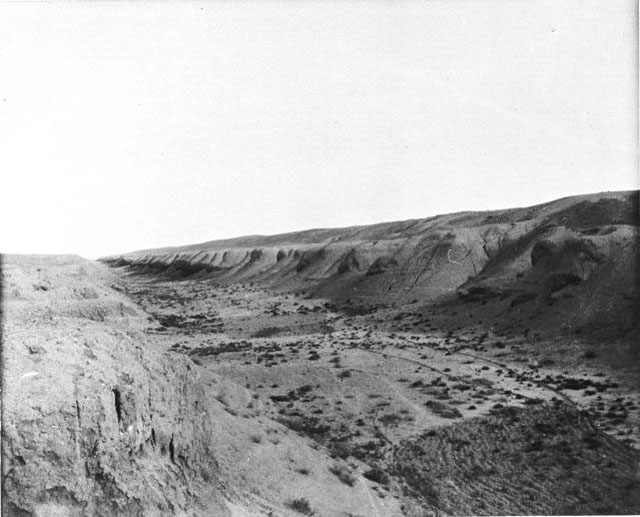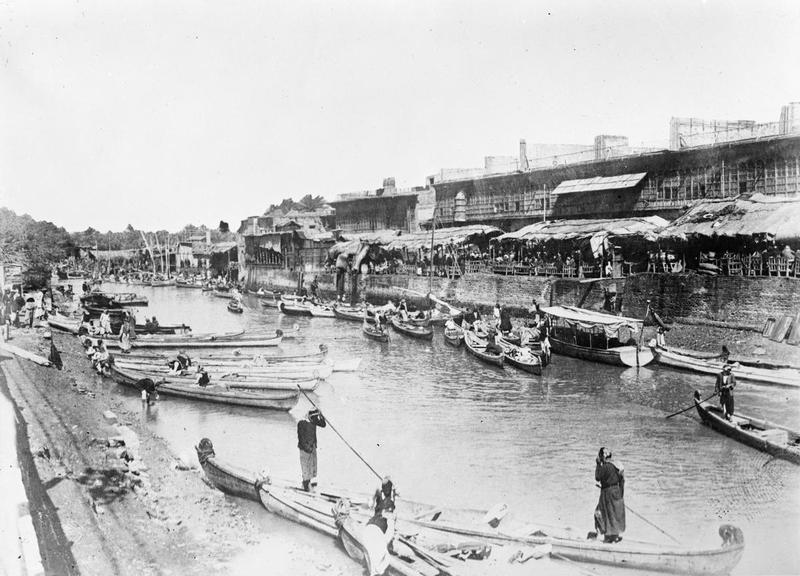|
Najdat
The Najdat were the sub-sect of the Kharijite movement that followed Najda ibn 'Amir al-Hanafi, and in 682 launched a revolt against the Umayyad Caliphate in the historical provinces of Al-Yamama, Yamama and Province of Bahrain, Bahrain, in central and eastern Arabia. Among the beliefs of the Najdat were: * Allowing the concealment of their true beliefs, if they were in territories where the Sunnis dominated. * Sinning Muslims were not takfir, excommunicated as unbelievers. The Najdat believed that they could be forgiven by Allah - only he who persisted in his sin and repeatedly committed it, could be accused of kufr, unbelief. Background After the Siege of Uthman, assassination of the third caliph Uthman in 656 by provincial rebels, the caliphate First Fitna, fell into civil war as Muawiyah I, Mu'awiya ibn Abi Sufyan, a relative of Uthman and the governor of Bilad al-Sham, Syria, challenged the legitimacy of the new caliph Ali. The indecisive battle between the two at Battle of ... [...More Info...] [...Related Items...] OR: [Wikipedia] [Google] [Baidu] |
Kharijite
The Kharijites (, singular ) were an Islamic sect which emerged during the First Fitna (656–661). The first Kharijites were supporters of Ali who rebelled against his acceptance of arbitration talks to settle the conflict with his challenger, Mu'awiya, at the Battle of Siffin in 657. They asserted that "judgment belongs to God alone", which became their motto, and that rebels such as Mu'awiya had to be fought and overcome according to Qur'anic injunctions. Ali defeated the Kharijites at the Battle of Nahrawan in 658, but their insurrection continued. Ali was assassinated in 661 by a Kharijite dissident seeking revenge for the defeat at Nahrawan. After Mu'awiya established the Umayyad Caliphate in 661, his governors kept the Kharijites in check. The power vacuum caused by the Second Fitna (680–692) allowed for the resumption of the Kharijites' anti-government rebellion, and the Kharijite factions of the Azariqa and Najdat came to control large areas in Persia and Arabi ... [...More Info...] [...Related Items...] OR: [Wikipedia] [Google] [Baidu] |
Al-Yamama
Al-Yamama () is a historical region in south-eastern Najd in modern-day Saudi Arabia. Only a handful of centralized states ever arose in the Yamama, but it figured prominently in early Islamic history, becoming a central theater in the Ridda wars immediately following Muhammad's death. Despite being incorporated into the Najd region, the term 'al-Yamama' remains in use as a traditional and historical term to reference or emphasize the region's ancient past. The current headquarters of the Saudi government in Riyadh, for example, is known as the Palace of Yamamah. Etymology The 13th-century geographer Yaqut al-Hamawi mentions a number of etymologies for ''al-Yamama'', including the root word ''hamam'' (Arabic for " domesticated pigeon") but the historian G. Rex Smith considers them unlikely. Instead, Smith holds that it is more likely the name ''al-Yamama'' is the singular form of the Arabic word for wild pigeons, ''yamam''. History From the pre-Islamic period through the ... [...More Info...] [...Related Items...] OR: [Wikipedia] [Google] [Baidu] |
Umar Ibn Ubayd Allah Ibn Ma'mar
Umar ibn Ubayd Allah ibn Ma'mar al-Taymi (died 702 or 703) was a commander of the Zubayrid and Umayyad caliphates in their wars with the Kharijites and the chief of the Banu Taym clan of the Quraysh in the late 7th century. Early life Umar was the son of Ubayd Allah ibn Ma'mar ibn Uthman ibn Amr ibn Ka'b ibn Taym of the Banu Taym clan of the Quraysh. The Quraysh was the tribe of the Islamic prophet Muhammad and the caliphs (leaders of the Muslim community). The first caliph, Abu Bakr (), belonged to the Banu Taym, as did Talha ibn Ubayd Allah, a prominent companion of Muhammad, a leading member of the community after his death in 632, and one of the wealthiest figures of the early Muslim state. Umar's grandfather, Ma'mar, was Talha's paternal uncle, and a companion of Muhammad, who converted to Islam with the bulk of the Quraysh after the conquest of Mecca in 630. Ubayd Allah was a commander in the conquest of the major Sasanian fortress city of Istakhr in Fars and most likely died ... [...More Info...] [...Related Items...] OR: [Wikipedia] [Google] [Baidu] |
Najda Ibn 'Amir Al-Hanafi
Najda ibn Amir al-Hanafi (; ) was the head of a breakaway Kharijite state in central and eastern Arabia between 685 and his death at the hands of his own partisans. His emergence formed part of the Second Muslim Civil War and the faction he led stood in opposition to the Umayyad Caliphate, which controlled Syria and Egypt, and the caliphate of Abd Allah ibn al-Zubayr, which controlled the Hejaz and Iraq. Early life and career Najda was born in circa 655 and belonged to the Banu Hanifa subtribe of the Banu Bakr, resident in the Yamama (central Arabia).. As a young man, he already wielded considerable influence among the Kharijites of the Banu Hanifa in his home region. In 680, he launched a rebellion in the Yamama against the Umayyad Caliphate, roughly coinciding with the Umayyads' suppression of Husayn ibn Ali's revolt during the Battle of Karbala.. During the 683 Umayyad siege of Mecca, where the anti-Umayyad opposition leader Abd Allah ibn al-Zubayr was holed up, Najda and his ... [...More Info...] [...Related Items...] OR: [Wikipedia] [Google] [Baidu] |
Ahwaz
Ahvaz (; ) is a city in the Central District of Ahvaz County, Khuzestan province, Iran, serving as capital of the province, the county, and the district. It is home to Persians, Arabs and other groups such as Qashqai and Kurds. Languages spoken in the area include Persian, Khuzestāni Arabic, Southern Kurdish, Neo-Mandaic, and dialects such as Bakhtiari, Dezfuli and Shushtari. Ahvaz is home to over 1.3 million people within its metropolitan area. Census results suggest a steady increase in population. As the most watery river in Iran, the Karun flows through the center of the city, which is one of the two navigable rivers in Iran, alongside the Arvand Rud. Ahvaz has earned the reputation of being the City of Bridges due to its numerous big bridges built on the Karun to facilitate better communication between the east and west parts of the city, although since the beginning of the 20th century, this city has always been known as the Oil Capital of Iran, along with ot ... [...More Info...] [...Related Items...] OR: [Wikipedia] [Google] [Baidu] |
Nafi Ibn Al-Azraq
Nafi ibn al-Azraq ibn Qays al-Hanafi al-Bakri (; died 685) was the leader of the Kharijite faction of the Azariqa during the Second Fitna. His ethnic origin is not certain but his father was probably a freedman of Greek origin which, according to the historian Benjamin Jokisch, is further supported by his name, which was uncommon among the Arabs. Alternatively, he was an Arab from Banu Hanifa. He is said to have been a quietist before he was encouraged by the Kharijite poet Abu al-Wazi to become active. Abu al-Wazi then practically demonstrated that to him by attacking a person who spoke against the Kharijites. During the first siege of Mecca in 683 he sided with Abd Allah ibn al-Zubayr to defend the city against the Umayyad besiegers but after the siege was over left him because of a difference of opinion on the murder of the third caliph Uthman Uthman ibn Affan (17 June 656) was the third caliph of the Rashidun Caliphate, ruling from 644 until his assassination in ... [...More Info...] [...Related Items...] OR: [Wikipedia] [Google] [Baidu] |
Siege Of Mecca (683)
The siege of Mecca in September–November 683 was one of the early battles of the Second Fitna. The city of Mecca was a sanctuary for Abd Allah ibn al-Zubayr, who was among the most prominent challengers to the dynastic succession to the Caliphate by the Umayyad Yazid I. After nearby Medina, the other holy city of Islam, also rebelled against Yazid, the Umayyad ruler sent an army to subdue Arabia. The Umayyad army defeated the Medinans and took the city, but Mecca held out in a month-long siege, during which the Kaaba was damaged by fire. The siege ended when news came of Yazid's sudden death. The Umayyad commander, Husayn ibn Numayr al-Sakuni, after vainly trying to induce Ibn al-Zubayr to return with him to Syria and be recognized as Caliph, departed with his forces. Ibn al-Zubayr remained in Mecca throughout the civil war, but he was nevertheless soon acknowledged as Caliph across most of the Muslim world. It was not until 692 that the Umayyads were able to send another a ... [...More Info...] [...Related Items...] OR: [Wikipedia] [Google] [Baidu] |
Basra
Basra () is a port city in Iraq, southern Iraq. It is the capital of the eponymous Basra Governorate, as well as the List of largest cities of Iraq, third largest city in Iraq overall, behind Baghdad and Mosul. Located near the Iran–Iraq border at the north-easternmost extent of the Arabian Peninsula, the city is situated along the banks of the Shatt al-Arab that empties into the Persian Gulf. It is consistently one of the hottest cities in Iraq, with summer temperatures regularly exceeding . Built in 636 as a military camp, Basra played an important role as a regional hub of knowledge, trade and commerce during the Islamic Golden Age and is home to the first mosque built outside the Arabian Peninsula. It was a center of the History of slavery, slave trade in Mesopotamia, until the Zanj Rebellion, Zanj rebellion in Battle of Basra (871), 871. Historically, Basra is one of the ports from which the fictional Sinbad the Sailor embarked on his journeys. It has experienced numerou ... [...More Info...] [...Related Items...] OR: [Wikipedia] [Google] [Baidu] |
Abd Allah Ibn Al-Zubayr
Abd Allah ibn al-Zubayr ibn al-Awwam (; May 624October/November 692) was the leader of a caliphate based in Mecca that rivaled the Umayyads from 683 until his death. The son of al-Zubayr ibn al-Awwam and Asma bint Abi Bakr, and grandson of the first caliph Abu Bakr, Ibn al-Zubayr belonged to the Quraysh, the leading tribe of the nascent Muslim community, and was the first child born to the Muhajirun, Islam's earliest converts. As a youth, he participated in the early Muslim conquests alongside his father in Syria and Egypt, and later played a role in the Muslim conquests of North Africa and northern Iran in 647 and 650, respectively. During the First Fitna, he fought on the side of his aunt A'isha against Caliph Ali (). Though little is heard of Ibn al-Zubayr during the subsequent reign of the first Umayyad caliph Mu'awiya I (), it was known that he opposed the latter's designation of his son, Yazid I, as his successor. Ibn al-Zubayr, along with many of the Quraysh and t ... [...More Info...] [...Related Items...] OR: [Wikipedia] [Google] [Baidu] |
Banu Quraysh
The Quraysh () are an Arab tribe who controlled Mecca before the rise of Islam. Their members were divided into ten main clans, most notably including the Banu Hashim, into which Islam's founding prophet Muhammad was born. By the seventh century, they had become wealthy merchants, dominating trade between the Indian Ocean, East Africa, and the Mediterranean. The tribe ran caravans to Gaza and Damascus in summer and to Yemen in winter, while also mining and pursuing other enterprises on these routes. When Muhammad began preaching Islam in Mecca, the Quraysh initially showed little concern. However, their opposition to his activities quickly grew as he increasingly challenged Arab polytheism, which was prevalent throughout pre-Islamic Arabia. As relations deteriorated, Muhammad and his followers migrated to Medina (the journey known as the Hijrah) after negotiating with the Banu Aws and the Banu Khazraj to mediate their conflict. However, the two sides proved unable to reach ... [...More Info...] [...Related Items...] OR: [Wikipedia] [Google] [Baidu] |



